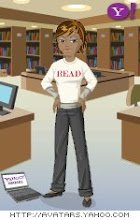In the school library and classroom, we are often faced with the copyright challenges of when it is acceptable to copy something and how much of an item [book, website, music, movies, art, photos, images] we can copy. Faced with declining budgets and little time, we are tempted to go ahead and make copies. But with the advent of file sharing, downloading and RSS, we must acknowledge and teach the ethics of information gathering and sharing. We do not want our school, students, or ourselves called to the carpet or confronted with a lawsuit or jail sentence!
Creative Commons is a copyright license that allows us to choose to share our intellectual property. This course is designed under a Creative Commons license and is an example of how one can take a piece of information or a product and re-work it to make it fit your needs. By acknowledging
What will the future bring? Web 2.0 new media tools keep coming at us at a pace faster than most of us can catch and apply in the classroom. Lucky for us that there are always individuals who love to follow or develop the new tools and keep track of them for us. One of my favorite resources is the
Discovery Exercises:
- Find an example or attribution that shows this program has been modified from it's original. (HINT: look at sidebar)
- Read two or three of the resources on
technology issues and trends from the list below. Create a blog post about your thoughts on any one of these. - Review the most recent HORIZON Report and then review an earlier version. Compare the two and post about how "on
target " or "way off base" the earlier report was. Consider creating atechnology application forecast for your school, to position alongside.
- Online copyright comic book developed by students at Duke University Law School
- Creative Commons website and Creative Commons in Education
- “Wanna Work Together?” YouTube video about Creative Commons
- California
Technology Assistance Project, Region IV cybersafety website. See Piracy. - The Horizon Report: educational
technology trends in higher education. "Must" reading! - See also the Horizons Report: K-12 Edition.
- Did You Know 4.0 (update to "Shift Happens" video)
Idea #1: Work with your teacher librarian on student projects that require giving proper credit to music, videos, or other copyrighted material. This is a good time to reinforce information literacy skills related to copyright and communications ethics. Be sure to refer to the curriculum content standard and/or Model School Library Content Standard addressed by the project.
Idea #2: Use the HORIZON REPORT and have students compare
Suggested "tags" or labels:
We hope you're enjoying all the exercises you've done so far. Keep having fun exploring and thinking about how you will use these new tools.


